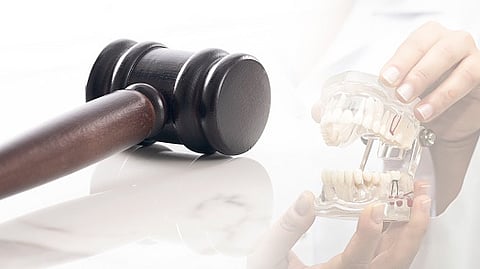

The Nazi leader, Adolf Hitler, and his wife, Eva Barun, were discovered dead by Russian soldiers near the end of World War II. But rumors circulated that Hitler didn't die and escaped with his wife. The fact is that he died, and the Russian soldiers burned and buried his body. However, while examining the body, a bridge with a special design was found on the jaw that indicated periodontal disease. When this was compared with the dental records of Hitler's dentist, they matched. Hence, dental analysis played an important role in confirming Hitler's death.
Forensic odontology, or forensic dentistry, is a field that applies dental evidence to aid in the investigation process. A forensic odontologist is a specially trained dentist who uses dental analysis to provide information to the forensic team.
What are the duties of a forensic odontologist?
To identify unknown human remains
To estimate the age of living or dead persons
To detect the gender of human skeletal remains
To analyze bite marks
To assist in the identification of the deceased in mass disasters
To appear as an expert witness in court and present evidence
Age estimation
If the deceased was under the age of 18, his or her age can be estimated by examining their dentition. Each deciduous and permanent tooth erupts at a specific age in the oral cavity. So by comparing the normal eruption pattern with the teeth that erupted in the oral cavity of the deceased, a forensic dentist can easily estimate the ages of deceased children and adolescents. If the deceased is an adult, the dentition cannot provide information on age. However, the translucency of the tooth root and tooth wear increase with age. But, this method cannot provide accurate age results. Recent technologies in forensic dentistry for precise age estimation are;
Aspartic acid racemization methodology
Radiocarbon dating
Sex determination
The shape and size of the crown of a tooth and the length of the tooth root vary in males and females. The tooth morphology and the craniofacial patterns help determine the gender of a deceased individual when only skeletal remains are left.
Lip prints
The elevation and depression on the external lip surface are unique for each individual. Hence, they are considered material evidence, like fingerprints. Lip prints left at the crime scene may help connect the investigation team to the suspect.
Bite marks
Human teeth have the capability to produce bite marks on human skin. Bite marks are those caused by teeth alone or in conjunction with other oral parts. They can be due to human or animal bites. Bite marks are often found in scenes like violent fights, sexual assault, or theft. Matching the bite mark to the suspect's dentition may help the investigation team confirm the culprit.
In the Nirbhaya case in New Delhi, 5–6 bite marks were found on the victim. The oral impressions of five accused men were taken, and models were prepared. Dr. Ashith B. Acharya, a forensic odontologist at SDM College of Dental Sciences and Hospital, Dharwad, analyzed the models and bite marks. When comparing these models to the bite marks on the victim, it was found that two of the five men's models matched the bite marks. Dr. Acharya presented himself in the Saket Court in New Delhi as an expert witness and was cross-examined by the defense lawyers. The honorable judge accepted this testimony and report, which contributed to the conviction of two of the accused.
DNA from teeth
Teeth are the strongest part of the body because of the presence of tough enamel. Due to its toughness, it can survive without degradation even in harsh conditions. As a result, it is regarded as the best source of DNA in forensic examination. The best example is the DNA recovered from the Denisovan molar found in Laos. With radiometric dating analysis, it was found that the owner of the tooth lived 1,31,000 years ago.
Facial reconstruction
The face of the skull is often recreated when the postmortem data does not provide enough information. Facial reconstruction is done by a forensic artist on the basis of dental parameters and facial dimensions. Using advanced technology, faces can be recreated in a precise manner. The recreated face of the skull is then matched with the photograph of the missing or presumed dead individual. The deaths of many people were confirmed with facial reconstruction technology.
Recently, facial reconstruction has been widely applied to recovered mummies. This enables us to understand how our ancestors looked.
Forensic dentistry in mass disasters
Forensic dentistry plays a prominent role in the identification of causalities in mass disasters like bomb blasting, biochemical accidents, and natural calamities like earthquakes and tsunamis. The teeth' size and shape varies with different race. Hence the race and ethnicity of the deceased can also be found in addition to age and sex.
In 2004, a tsunami and earthquake struck Sumatra, Indonesia. The ethnicity of the majority of victims was found with the help of forensic dentistry.
The Bottom Line
Dental analysis has been used in solving crimes and mysteries since early A.D. But at that time it wasn't known as forensic dentistry. Over time, it has been used extensively to solve criminal and high-profile cases. In the last 50 years, forensic dentistry evolved as a specialty. At present, forensic dentistry helps in solving many crimes, disasters, and missing cases.
References :
https://www.ncbi.nlm.nih.gov/pmc/articles/PMC4439663/
https://www.ncbi.nlm.nih.gov/books/NBK540984/
http://ashithacharya.com/about
